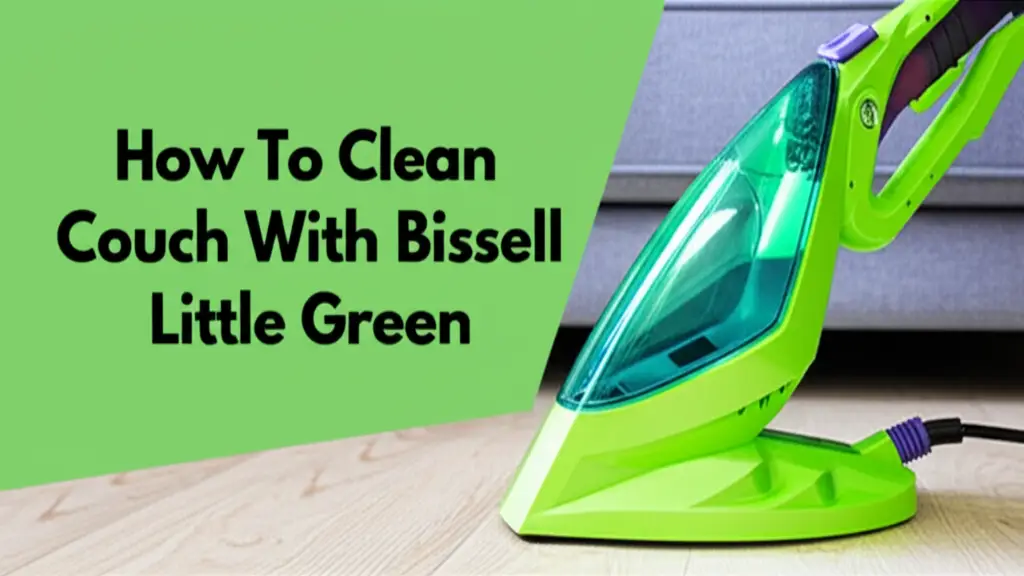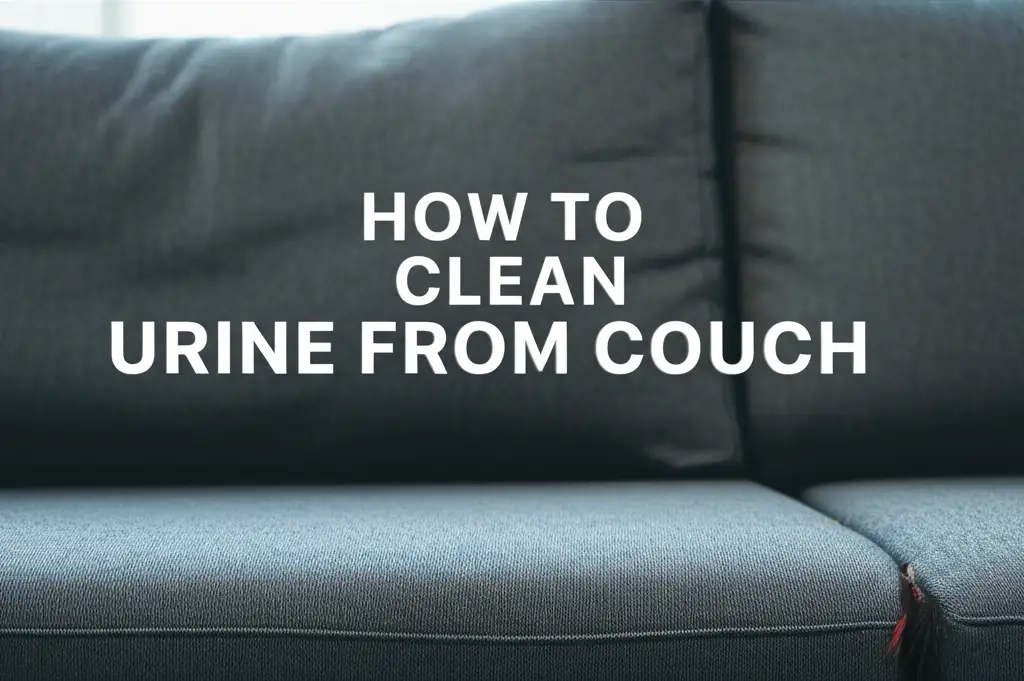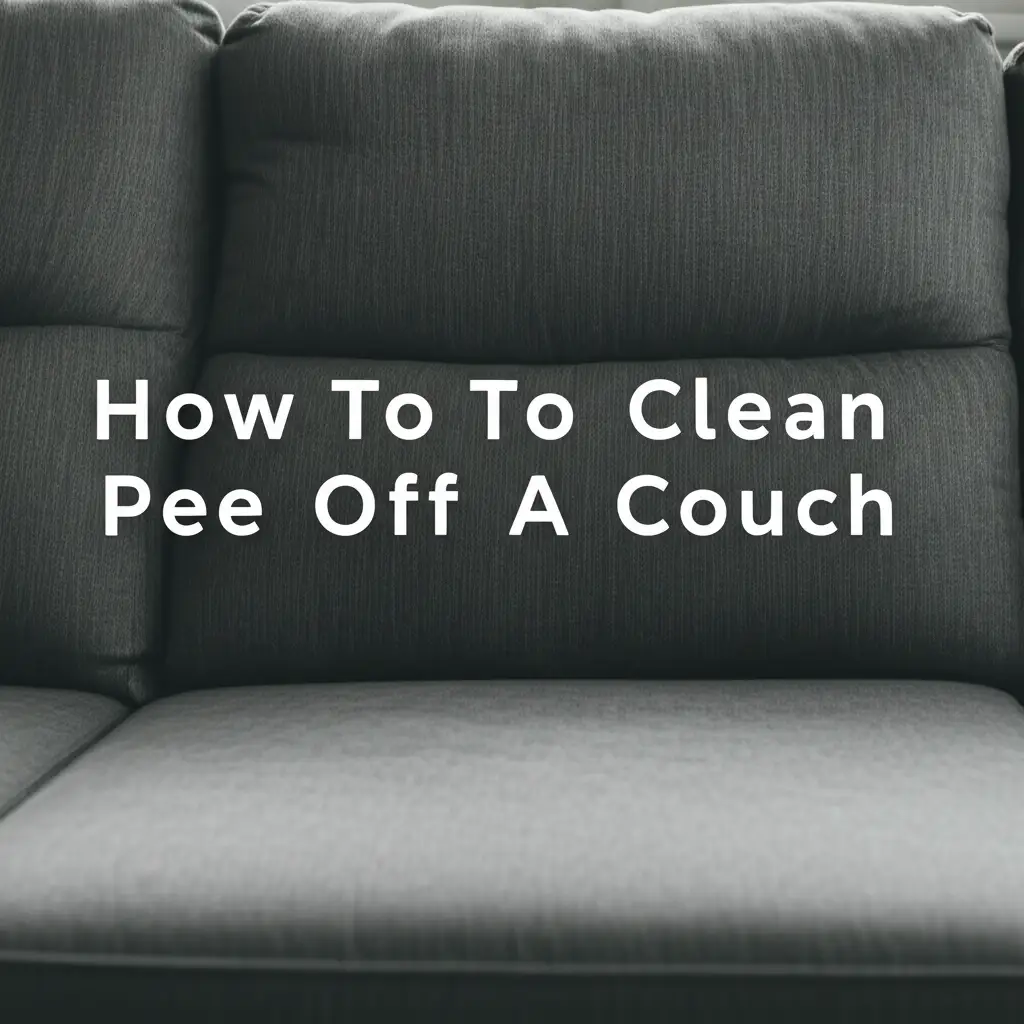· Home Cleaning · 15 min read
How To Clean Couch With Bissell Little Green

Transform Your Couch: How To Clean With Bissell Little Green
Is your beloved couch looking a bit tired? Are persistent stains and lingering odors diminishing its appeal? I understand the frustration of seeing a once-pristine piece of furniture succumb to daily wear and tear. Fortunately, the Bissell Little Green is a powerful tool designed to bring your upholstery back to life.
This guide will show you exactly how to clean a couch with a Bissell Little Green. We will explore everything from preparing your couch to tackling stubborn stains and ensuring proper drying. You will gain practical steps and valuable tips to achieve a fresh, spotlessly clean couch that looks and feels new again. Let us get started on restoring your furniture.
Takeaway
- Inspect and Prepare: Identify fabric type, test for colorfastness, and vacuum the couch thoroughly before cleaning.
- Choose Correct Solution: Use Bissell-approved formulas; pre-treat tough spots.
- Clean Systematically: Apply solution, scrub gently, and extract dirty water using the Bissell Little Green.
- Ensure Proper Drying: Allow ample air circulation to prevent mold and mildew.
To clean a couch with a Bissell Little Green, you must first vacuum the upholstery thoroughly. Then, pre-treat any visible stains with a suitable solution. Fill the machine with water and the correct cleaning formula. Next, spray the fabric, gently scrub with the brush, and extract the dirty liquid to lift grime and refresh your couch.
Understanding Your Bissell Little Green: A Powerful Cleaning Tool
The Bissell Little Green is a compact, portable spot and stain cleaner. It is specifically designed for quick cleanups and deep cleaning of upholstery, carpets, and car interiors. This machine uses a combination of water, cleaning solution, and powerful suction to extract dirt and stains from fabric surfaces. Its small size makes it easy to maneuver around furniture.
Many people find the Bissell Little Green invaluable for maintaining a clean home. I personally appreciate how easily it handles spills and pet messes. The machine works by spraying a cleaning solution onto the stained area. A built-in brush then agitates the fibers. Finally, strong suction pulls up the dirty water and dissolved grime into a separate tank. This process effectively removes embedded dirt and refreshes the fabric.
Proper use and maintenance of your Bissell Little Green are crucial for optimal results. Always read the manufacturer’s instructions before first use. Regular cleaning of the dirty water tank and nozzle prevents clogs and ensures the machine operates efficiently. This small investment in maintenance extends the life of your cleaner.
Preparing Your Couch for a Deep Clean
Before you begin the cleaning process, proper preparation of your couch is essential. This step ensures effective cleaning and prevents damage to your furniture. A well-prepared surface allows the Bissell Little Green to work most efficiently. Neglecting these initial steps can lead to uneven cleaning or even fabric damage.
First, identify your couch’s fabric type. Most couches have a tag, often on a cushion or under the frame, with cleaning codes. These codes are important:
- W: Water-based cleaner only. (This is ideal for the Bissell Little Green.)
- S: Solvent-based cleaner only (e.g., dry-clean only). Do not use water.
- WS: Water-based or solvent-based cleaner.
- X: Vacuum only. Do not use any liquid cleaners.
If your couch is marked ‘S’ or ‘X’, do not use the Bissell Little Green, as it uses water. Using water on these fabrics can cause irreversible damage, such as shrinking, water spots, or dye bleeding. Always confirm the fabric compatibility first. This simple check saves you from potential regret.
Next, vacuum your entire couch thoroughly. Use the upholstery attachment of your regular vacuum cleaner to remove loose dirt, crumbs, pet hair, and dust. Pay special attention to crevices, under cushions, and along seams. Removing surface debris prevents it from turning into muddy residue during the wet cleaning process. I always find this step makes a significant difference in the final outcome.
Finally, perform a spot test in an inconspicuous area of the couch, such as the back or underneath a cushion. Apply a small amount of your chosen Bissell cleaning solution to a hidden spot. Wait a few minutes, then blot with a clean white cloth. Check for any color bleeding or fabric discoloration. If there are no adverse reactions, the solution is safe to use on your couch. This test is crucial to avoid ruining your upholstery.
Choosing the Right Cleaning Solution for Couch Fabrics
Selecting the correct cleaning solution is vital for effective and safe couch cleaning. The Bissell Little Green is designed to work with specific Bissell cleaning formulas. Using the recommended solutions ensures optimal performance of your machine and safety for your upholstery. Never use harsh chemicals or formulas not designed for extractors.
Bissell offers a range of formulas tailored for different needs. These include solutions for general upholstery cleaning, pet stains, and odors. Always choose a formula that is safe for your specific fabric type, as indicated by the cleaning code. Using the right solution prevents damage and ensures a thorough clean. I find that using Bissell’s own solutions gives me peace of mind about my machine’s longevity and my couch’s safety.
For general cleaning, a multi-purpose upholstery cleaning solution works well. If you are dealing with specific pet messes, a dedicated pet stain and odor remover is more effective. These specialized formulas contain enzymes that break down organic matter and neutralize odors. Remember to follow the dilution instructions on the bottle precisely. Over-concentrating the solution can leave residue.
Sometimes, tough spots require pre-treatment. You can gently blot fresh stains with a clean cloth before applying any solution. For older, set-in stains, a pre-treatment spray designed for upholstery can help loosen the grime. Apply it, let it sit for a few minutes as directed, and then proceed with the Bissell Little Green. For certain stains, people might consider household remedies. For example, some cleaning issues can be addressed with vinegar and baking soda. However, always test these on an inconspicuous area first, especially since they are not Bissell-brand solutions.
Step-by-Step Guide: Cleaning Your Couch with the Bissell Little Green
Cleaning your couch with the Bissell Little Green is a straightforward process when you follow these steps. Take your time with each stage to ensure thorough cleaning and avoid mistakes. I have found that a systematic approach yields the best results. This method will help you revitalize your upholstery effectively.
First, fill the clean water tank of your Bissell Little Green. Consult your machine’s manual for the correct water temperature and the recommended fill lines. Add the appropriate Bissell cleaning solution according to the instructions on the formula bottle. Do not overfill the tank. Ensure the tank is securely latched back onto the machine.
Now, begin cleaning by working in small sections, approximately 2x2 feet. Start at one end of the couch and work your way across. Hold the cleaning tool firmly against the fabric. Press the trigger to spray the cleaning solution onto the upholstery. Move the tool slowly back and forth over the area, allowing the solution to penetrate the fibers. Do not saturate the fabric excessively.
Release the spray trigger and continue to move the tool over the same section. This action allows the powerful suction to extract the dirty water and cleaning solution from the fabric. Make several passes until you no longer see dirty water being pulled into the recovery tank. Overlapping each pass slightly ensures even cleaning.
Periodically, check the dirty water tank. When it gets full, empty it into a sink or toilet. Rinse the tank thoroughly with clean water to remove any residue. Refill the clean water tank as needed. Continue this process, section by section, until you have cleaned the entire couch. I always make sure to keep an eye on the dirty water level to prevent overflows.
Once you have finished cleaning all sections, run the machine with just clean water in the tank. This step helps to rinse any remaining cleaning solution from the fabric. Pass the tool over each cleaned section a few times. This rinse cycle minimizes residue buildup, which can attract dirt later. Ensure you extract as much water as possible.
Tackling Stubborn Stains and Odors on Upholstery
Stubborn stains and lingering odors require special attention when cleaning your couch. The Bissell Little Green is excellent for these challenges, but sometimes a targeted approach is needed. I have personally dealt with many tough pet stains and mysterious spots, and specific techniques make a big difference. This section will guide you through more intensive stain and odor removal methods.
For fresh stains, act quickly. Blot up as much of the spill as possible with a clean, white cloth. Avoid rubbing, as this can spread the stain and push it deeper into the fibers. Start from the outside of the stain and work your way inward. This helps to contain the spill. Speed is crucial for preventing stains from setting.
For dried or set-in stains, pre-treatment is key. Apply a small amount of a specialized upholstery stain remover directly to the stain. Make sure it is compatible with your couch fabric. Allow the pre-treatment to sit for the recommended time, usually 5-10 minutes, to break down the stain. Then, use your Bissell Little Green as described in the previous section, spraying and extracting over the pre-treated area. You might need to repeat this process for very tough spots.
Odors, especially from pets, often require specific enzymatic cleaners. These cleaners work by breaking down the odor-causing organic matter. Add an appropriate pet cleaning solution to your Bissell Little Green. When cleaning the affected area, ensure the solution penetrates deep enough to reach the source of the odor. Extract thoroughly to remove the dissolved odor molecules. Proper extraction is vital; leaving moisture can worsen odors or lead to mold. Just like with cleaning some appliances like a coffee maker where mold can be an issue, proper drying is crucial here. Understanding how to clean mold out of a coffee maker highlights the importance of addressing moisture, which applies to upholstery as well.
Consider using a scrub brush attachment for heavily soiled or matted areas. These brushes provide extra agitation to loosen embedded dirt and grime. Apply firm but gentle pressure, working in small circles. Follow immediately with the extraction function to pull out the dislodged dirt. Always test any new brush or aggressive scrubbing on an inconspicuous area first to ensure it does not damage the fabric.
Drying Your Couch Properly and Post-Cleaning Care
Proper drying is one of the most critical steps after cleaning your couch with the Bissell Little Green. Inadequate drying can lead to several problems, including mildew growth, unpleasant odors, and even damage to the couch’s internal structure. I always emphasize this step because it ensures your hard work results in a truly fresh and clean couch. This process protects your investment.
After cleaning, extract as much moisture as possible from the couch fabric. Make several extra passes over each section with the Bissell Little Green’s suction tool, without spraying more solution. The goal is to leave the fabric feeling only slightly damp, not wet. The more water you extract, the faster the couch will dry. This step significantly reduces drying time and minimizes risks.
Next, ensure excellent air circulation around the cleaned couch. Open windows in the room to allow fresh air to flow through. You can also use fans, placing them strategically to blow air directly onto the damp areas of the couch. A dehumidifier can also be very helpful in removing moisture from the air, speeding up the drying process. Do not cover the couch or place cushions back on immediately.
The drying time will vary depending on factors like fabric type, humidity levels, and the amount of moisture extracted. Generally, a couch cleaned with a Bissell Little Green should dry within 6-24 hours. Avoid using the couch until it is completely dry to the touch, both on the surface and deeper within the cushions. Sitting on a damp couch can compress the fibers and lead to lingering moisture.
Once the couch is fully dry, fluff up any removable cushions and replace them. You can also lightly vacuum the couch again to lift the fibers and restore its plush appearance. This final vacuuming also helps remove any potential residue left behind by the cleaning solution. For continuous freshness, consider a fabric protector spray designed for upholstery. Regular vacuuming and addressing spills immediately will help maintain your couch’s cleanliness for longer.
Common Mistakes to Avoid When Cleaning Your Couch
Cleaning your couch with a Bissell Little Green can yield fantastic results, but certain mistakes can hinder the process or even damage your furniture. Being aware of these pitfalls helps you achieve a successful clean. I have learned from my own experiences and seen common errors people make. Avoiding these ensures a better outcome and prolongs your couch’s life.
One common mistake is neglecting to pre-test the cleaning solution. As discussed earlier, always perform a spot test on an inconspicuous area first. Different fabrics react differently to cleaning agents, and some dyes can bleed. Skipping this simple step can lead to permanent discoloration or damage to your upholstery. A quick test saves you from a potential disaster.
Another error is over-saturating the couch fabric with water or cleaning solution. While it might seem like more liquid means a deeper clean, excessive moisture can be detrimental. It prolongs drying time, increases the risk of mold and mildew, and can damage the internal padding or frame of the couch. Always use just enough solution to wet the fibers and rely on the suction to extract it effectively.
Using the wrong cleaning solution is also a frequent mistake. Only use cleaning formulas specifically designed for portable extractors and upholstery. Harsh household cleaners, dish soap, or laundry detergent can create excessive suds, leave sticky residues, or be too aggressive for delicate couch fabrics. These residues can attract dirt faster, making your couch appear dirty sooner. Some people wonder if they can use common household items for cleaning purposes. For example, some cleaning guides discuss how to clean a dishwasher with vinegar and baking soda. While these ingredients are effective for certain cleaning tasks, they may not be suitable or recommended for use in a Bissell Little Green or on all upholstery types.
Not vacuuming the couch thoroughly before wet cleaning is another pitfall. Leaving loose dirt, crumbs, and pet hair on the surface means you are essentially making muddy water when you introduce the cleaning solution. This can spread grime rather than remove it. Always use a strong vacuum to remove all dry debris first for optimal results.
Finally, failing to ensure proper drying is a critical mistake. Leaving moisture in the couch can lead to mildew, unpleasant odors, and potential damage to the upholstery fibers or internal structure. Always allow ample air circulation and do not use the couch until it is completely dry. Patience during the drying phase is essential for a truly clean and fresh couch.
FAQ Section
Q1: Can I use any cleaning solution in my Bissell Little Green?
A1: No, you should only use cleaning solutions specifically formulated for Bissell portable carpet and upholstery cleaners. Using other detergents or household cleaners can damage your machine, void its warranty, create excessive suds, or leave sticky residues on your couch fabric. Always check the machine’s manual for recommended solutions.
Q2: How long does it take for a couch to dry after using the Bissell Little Green?
A2: The drying time for a couch cleaned with a Bissell Little Green typically ranges from 6 to 24 hours. This depends on factors like the fabric type, how much moisture was extracted, room humidity, and air circulation. Using fans and opening windows can significantly speed up the drying process. Ensure the couch is completely dry before use.
Q3: What should I do if my couch fabric has an ‘S’ or ‘X’ cleaning code?
A3: If your couch fabric has an ‘S’ (solvent-based clean only) or ‘X’ (vacuum only) cleaning code, do not use the Bissell Little Green. These codes indicate that water-based cleaning can cause damage, such as shrinking, water spots, or dye bleeding. For ‘S’ codes, consult a professional upholstery cleaner. For ‘X’ codes, only vacuum.
Q4: How often should I clean my couch with the Bissell Little Green?
A4: The frequency of cleaning depends on usage, presence of pets, and spills. For light use and no pets, a deep clean every 6-12 months might be sufficient. For homes with pets, children, or high traffic, cleaning every 3-6 months is often recommended. Spot clean spills immediately to prevent them from setting.
Q5: Can the Bissell Little Green remove all types of stains?
A5: The Bissell Little Green is highly effective at removing many common stains, including food spills, pet accidents, and general dirt. However, some very old, set-in, or specialized stains (like ink or dye transfers) might require professional treatment. Immediate action on fresh stains increases the chances of complete removal.
Q6: How do I maintain my Bissell Little Green after cleaning?
A6: After each use, empty and rinse both the clean and dirty water tanks thoroughly. Remove the nozzle and brush attachments and rinse them to clear any debris or residue. Allow all components to air dry completely before reassembling the machine. This prevents mold growth and ensures the cleaner is ready for its next use.
Conclusion
Cleaning your couch with a Bissell Little Green machine is a very effective way to refresh your living space. We have explored the entire process, from preparing your upholstery to tackling stubborn stains and ensuring proper drying. By following these steps, you can confidently restore your couch to a clean and vibrant state. A clean couch not only looks better but also contributes to a healthier home environment.
Remember to identify your fabric type, perform a spot test, and vacuum thoroughly before any wet cleaning. Use the correct Bissell cleaning solutions and follow the step-by-step instructions for spraying, scrubbing, and extracting. Most importantly, ensure your couch dries completely to prevent any issues. With consistent care and the power of your Bissell Little Green, your couch will remain a comfortable and inviting centerpiece in your home for years to come. Take action now and transform your couch.
- Bissell Little Green
- couch cleaning
- upholstery cleaner
- stain removal
- deep cleaning
- home cleaning tips
- fabric care




